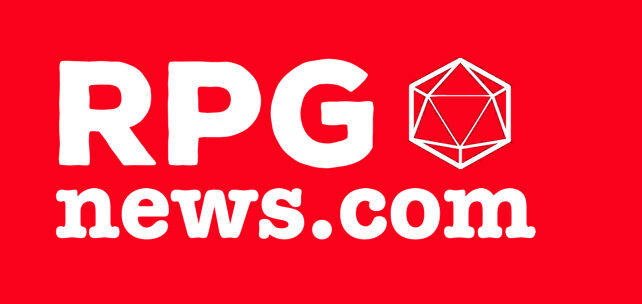Religions frequently shares myths with apocalyptic cults. They often believe the end of the world is going to be right around the corner and everyone needed to be ready to go. That’s why so much artwork from the medieval era features demons, skeletons and other monsters. These images become even more prominent once the Black Plague hit. The faithful thought those creatures would be showing up any day now. Doomsong, by designers Jack Caesar, Chris Caesar and Morgan Finley, set their game in a world of similar feeling to the macabre Middle Ages. It’s not post-apocalypse, per se, but more like while the end of the world is beginning. Caesar Ink sent along a copy of the book for this review. Is the game sacred or profane? Let’s play to find out.
While many of the elements seem inspired by the OSR, like the gritty setting and simple primarily black and white presentation, the system is more akin to Tiny Dungeons. Players roll a d6 trying to hit a base target number of five with character traits and situations modifying the base difficulty. The most notable aspect of the roll is the Doomcoin. Flipping the Doomcoin kicks the success level up or down a notch depending on if it lands heads or tails. This is the only way players get critical failures or success. The doomcoin remains in play in front of the player that used it last until someone else takes it or the GM makes the player flip it on a roll of their choosing. I think this is a great way to keep the drama of critical rolls while not kicking someone with awful dice luck when they are down.
Characters are created through a lifepath system that generates these character traits while also giving players opportunities to twist and corrupt their characters before play. Each path offers multiple ways forward, usually one randomly determined and a few branching out until you reach the end of the system. There isn’t as much risk vs. reward as the classic Traveller paths but the system also gives the option of killing off a character and trying again if they get stuck with traits you don’t like. The system moves quickly enough that it doesn’t seem like a big deal if the character gets fed to the Pyre in the end.
Combat is a bit more tactical. Players get two actions per round and the choice of actions determines the phase in which they go. You can attack more quickly in a round, for example, but you’re rolling with disadvantage then, though 2d6 is a bit less chaotic than 2d20. Footing exists as a point pool to assist with dodging and movement and the game fits in some gnarly criticals based on weapon type for those successful Doomcoin flips.
The world of Doomsong is one where God is dead and the church is in denial. The omnipotent being was killed by its children and lessers and those forces now try to influence the world of that being’s creation. These are the sources of magic in the world, which gives spells a bit of a not quite right feeling without going into full moral decay or churches chasing wizards with torches and pitchforks. Magic and the Traitor Gods, as they are known, also give the otherwise gribbly, woodcut style of the book splashes of queasy color.
The book offers advice on how to run Doomsong as a one shot, a regular campaign or as a Westmarches-style game with a rotating set of players. The central hub to this is the guild, which is the organization everyone belongs to. The default one is the Gravedigger’s Guild which functions as a semi-secret monster hunter organization, though there are rules to build new Guilds with player input. I would love to see an expansion of these rules should there be an expansion to the game outside of the separate campaign book.
Doomsong reminded me a little of Warhammer Fantasy Role Play as well as Warlock! This is a doomed world but it doesn’t quite feel like doom is inevitable yet. This game is in a middle ground between those two and has the advantage of not being weighed down by years of world building and fiction. What backstory here is intriguing but feels just heavy enough to build the world at each individual table.
Bottom Line: Doomsong is a good dark fantasy foundation for a game that will be familiar to fans of Warhammer and The Witcher without being weighed down by a lot of lore.
Read more at this site
